Road of the hidden treasures
The Palace of Culture
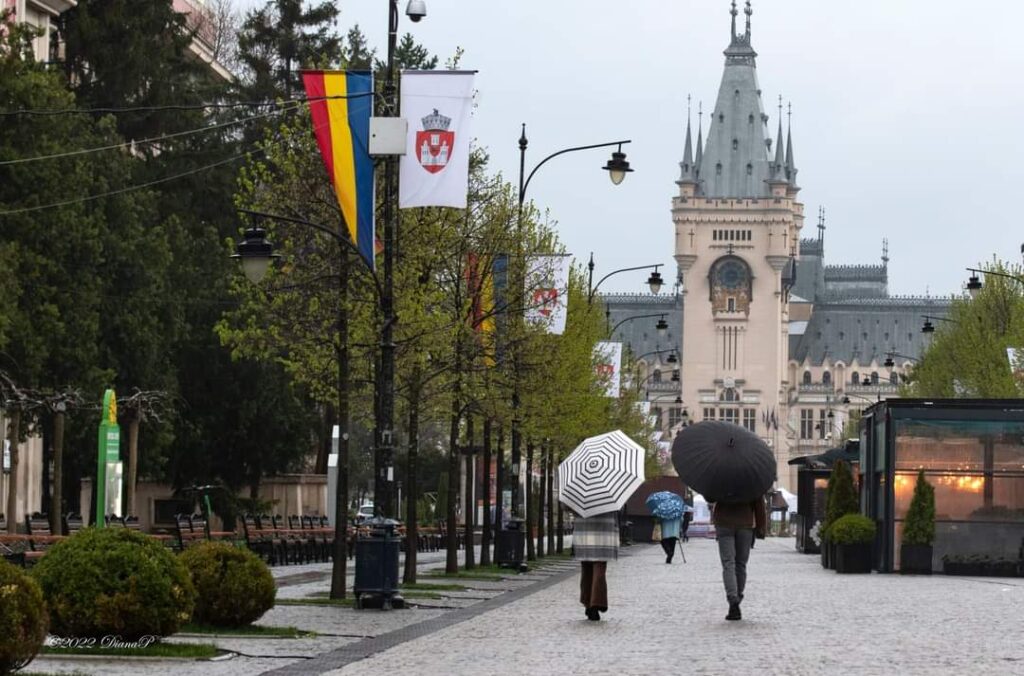
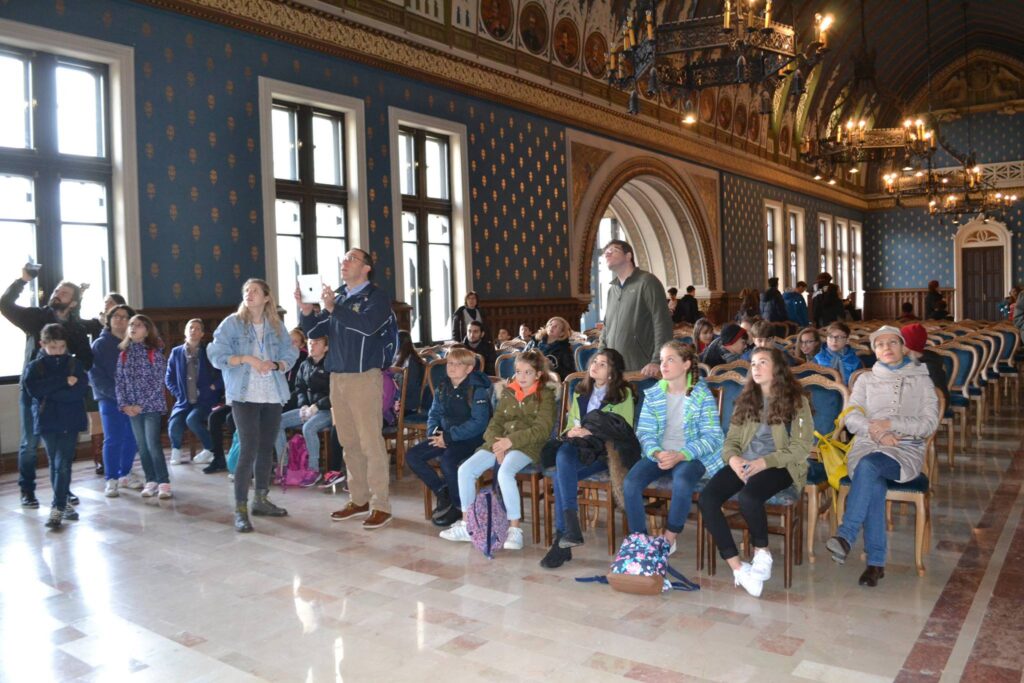
The Iași Palace of Culture (Palatul Culturii) is an early 20th-century Neo-Gothic flamboyant architectural masterpiece and iconic building located in the city of Iași, Romania. The palace is one of the biggest buildings in the entire country; it covers an area of 34,236 m² (368,510 sq ft). The building contains an astounding 298 rooms and an impressive 128 windows. The Iași Palace of Culture is built on the ruins of the 15th-century medieval Royal Court of Moldavia from 1434, as well as on the ruins of a previous palace that once stood in its place. The building is designated a historical monument of Romania. The palace is located at a main focal point in the city of Iași. In fact, the entire city was designed in a way that the main streets would all lead back to the palace. This statue is of Stephen the Great, voievod of Moldavia, considered by his contemporary fellow Europeans to be “the most famous prince and warrior” of his time. He was a head of state who managed to hold the reins of the country for 47 years. This statue was sculpted by Emmanuel Frémiet, a famous sculptor of equestrian statues in France and perhaps even in the world. Thus, Iași stands next to Paris, for which Emmanuel Frémiet made the gilded statue of Jeanne d’Arc, placed in the Place des Pyramides; of Bogotá, for which he sculpted the equestrian statue of Simón Bolívar; and of Mont Saint-Michel, for which he carved an Archangel Michael on the highest arrow of the abbey.
The Dosoftei House is a 17th century building named after the religious ruler of Moldavia (region of Romania) Metropolitan Dosoftei who in 1679 established here a print house (second in the region). The building underwent restoration in 1966-1969 and, since 1970, has been housing the Department of Old Romanian Literature of The Romanian Literature Museum, storing a collection of old and rare manuscripts, including the Romanian Book of Teaching, Bible of Bucharest, and others.
According to chronicler Grigore Ureche, the church was established by Stephen the Great after the Battle of Cătlăbuga in 1485. The building is one of Stephen’s city churches: large, tall, with a spire, side apses and an enlarged vestibule. The facade was of unworked stone, with buttresses that reached two-thirds of the walls’ height. The exterior was decorated with two rows of recesses, as well as rows of enameled, colored terra-cotta discs representing people and animals. The apses were endowed with large arches.
The Vasile Alecsandri National Theatre
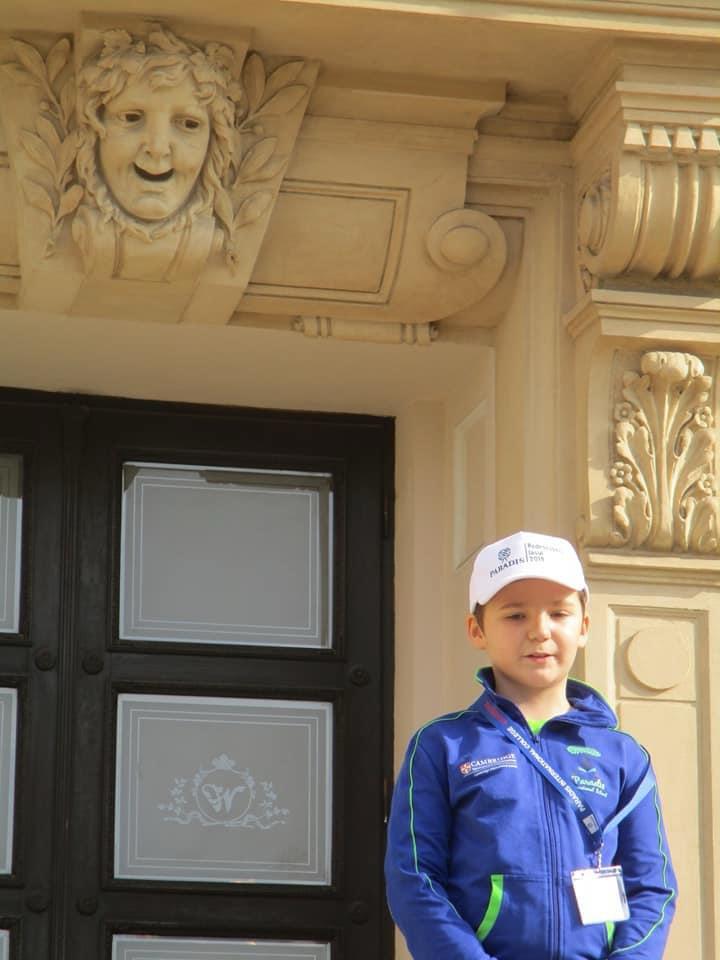
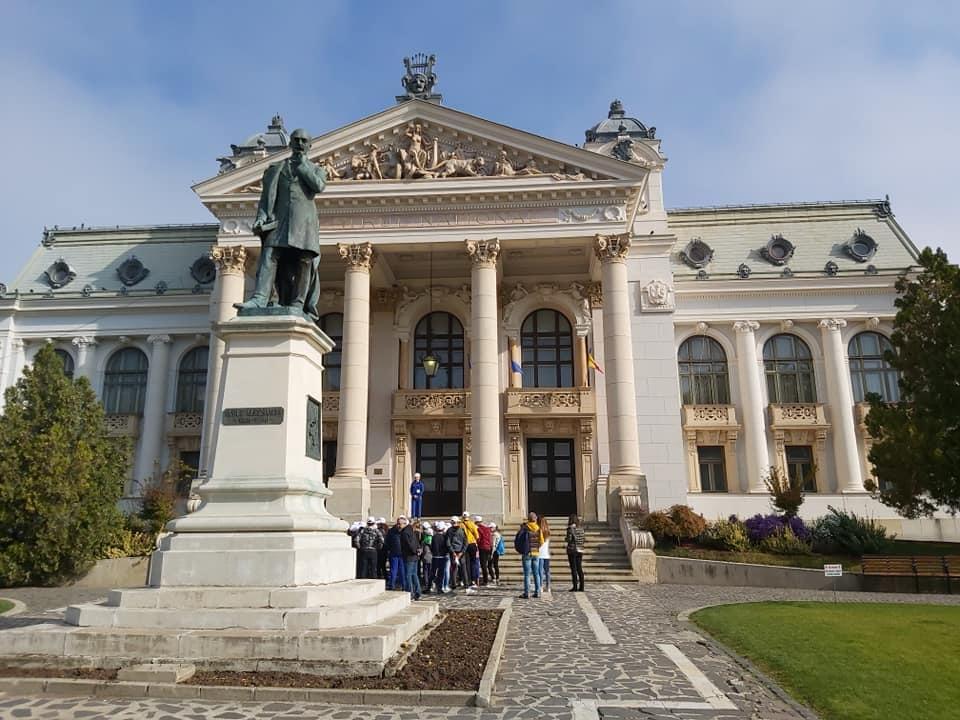
In 2016, the “Vasile Alecsandri” National Theatre in Iași was designated as the second theatre in the world that is “breathtaking,” according to a BBC ranking. Thus, in recent years, it has become a true tourist attraction. The companies in that ranking are select; next to the „Vasile Alecsandri” theatre are the famous Bristol Hippodrome in Great Britain, Teatro La Fenice in Venice, and Palais Garnier in Paris. The Iași National Theatre building was inaugurated in 1896, after two years of construction, on the site of the old city hall. The edifice represents a neoclassical architectural jewel. It was built according to the plans of the Viennese architects Fellner and Helmer, who erected theatres in Vienna, Prague, Chernivtsi, Odessa, Cluj, etc. The architects also introduced innovative elements, present in the modernist geometric adornments of the exterior balconies and the composite column capitals at the entrance, which contain a metal lyre subtly inserted. The hall is adorned with sculptural and painting elements of Baroque and Rococo inspiration, all highlighted by the Venetian chandelier with 109 light bulbs and by the 1,418 electric lamps. The ceiling, painted in pastel colors by Alexander Goltz, has as its theme the Story, represented through allegories of paradise, nymphs, and angels framed by Rococo stucco. The ancient curtain was painted by the Viennese master Lenz and finished by one of his disciples, featuring in the center the allegory of life, with the three ages, and on the right the allegory of the Union of Romanian Principalities (Moldavia and Wallachia, in 1859). The curtain comes down sometimes at the beginning of some great performances to be admired by the public. The iron curtain, painted by Al. Goltz, with ornamental motifs placed symmetrically, tightly separates the stage from the rest of the hall. Almost 7 kg of gold were used to cover the stucco and most of the ornaments in the hall.
The Roznovanu Palace
The Union Museum
Roznovanu Palace, currently the headquarters of the City Hall in Iași, was built between 1830 and 1832 in the neoclassical style by the great treasurer Iordache Rosetti Roznovanu (1764–1836), according to the plans of the architect Gustav Freywald. Since its inauguration, the building has been noted as one of the largest and most beautiful residences of the boyar class in Iași, standing out both for its location in the center of the city, as well as for its architecture, decorations, and interior arrangements, along with the prestige, wealth, and deeds of its owners. The fame of the palace was also fueled by the hosting of lavish worldly events—cultural and political—its threshold being crossed frequently by representatives of the high autochthonous society and political and cultural personalities of the time, as well as by various dignitaries, soldiers, and foreign artists.
The Union Museum, located in the center of the city, on Lăpuşneanu Street No. 14, was built at the beginning of the 19th century in neoclassical style, the house passed into the ownership of several well-known noble families from Moldova during the first half of the 19th century: C Between 1859 and 1862, the palace was rented to serve as the residence of the ruler of the United Principalities, Alexandru Ioan Cuza. Those four years were enough for the edifice to remain in collective memory under the name „Cuza Palace.” During the First World War, King Ferdinand the Complete set up his headquarters here. Since 1937 has been declared a historical monument, and the „Palatul Cuza-vodă” museum has been established. Under its current name, the Museum of the Union, which opened on January 24, 1959, it includes important collections on the history of the Union of the Romanian Principalities.
A unique monument of its kind, a repository of the cultural and spiritual life of Moldavia, the Monastery of the Three Holy Hierarchs is located in the old center of Iasi, on Stefan cel Mare si Sfant Boulevard, formerly known as Princely Street. The „Trisfetite” Church, built during Prince Vasile Lupu’s reign (1637-1639), was intended to be a royal burial ground; it reflects the founder’s aspiration to the Byzantine world as it combines traditional structures and shapes with precious materials and sumptuous decoration. Metropolitan Varlaam consecrated this holy place on the 6th of May 1639, and two years later, Saint Paraskeve’s relics were moved here. The monastery accommodated a printing house and the „Schola Basiliana,” the future Princely Academy. In 1970, the monastery was closed, and the only religious services to be officiated were the celebration of the feast day of the Three Hierarchs (30th January) and Union Day on the 24th of January. Following the 1989 events, the monastery was reopened at the initiative of His Beatitude Daniel, Metropolitan of Moldavia and Bukovina. The monument is renowned for its embroidery in stone (most of it preserved in its original form) that decorates the outer walls. Thirty different carved stone decoration bands cover the entire outside walls of the church from the base to the top of the steeples; they are inspired by the national old wood carvings and embroideries blended with Asian and Western elements.
Mihai Eminescu Central University Library is the oldest university library in the country and one of the most important libraries in Romania. The latter was built between 1930-1934 by the engineer Emil Prager, according to the plans of the architect Constantin Jotzu. The interior of the edifice presents ornaments made of Carrara marble and Venetian mosaic, and the exterior is decorated with impressive columns in the Ionic style, neo-odoric pilasters, small triangular pediments, and medallions with outstanding personalities of the national culture. The priceless manuscripts, incunabula, old and rare books, some bearing illustrious signatures (B.P. Hasdeu, M. Eminescu – who were also directors of the institution, I. Creangă, Şt. Procopiu, etc.), come mainly from monastic libraries and individuals (C. Hurmuzachi, B.P. Hasdeu, Mihail Sturdza, L. Steege, V. Adamachi, Titu Maiorescu, Paul de Gore, Iorgu Iordan, etc.), who entered our heritage according to the law, through donations or purchase. BCU Iași has a fund of over 2,500,000 bibliographic units, an important part of which is represented by the special collections that hoard over 100,000 documents, manuscripts, old Romanian books, foreign old books, albums, maps, stamps, and archive pieces.
The Metropolitan Cathedral
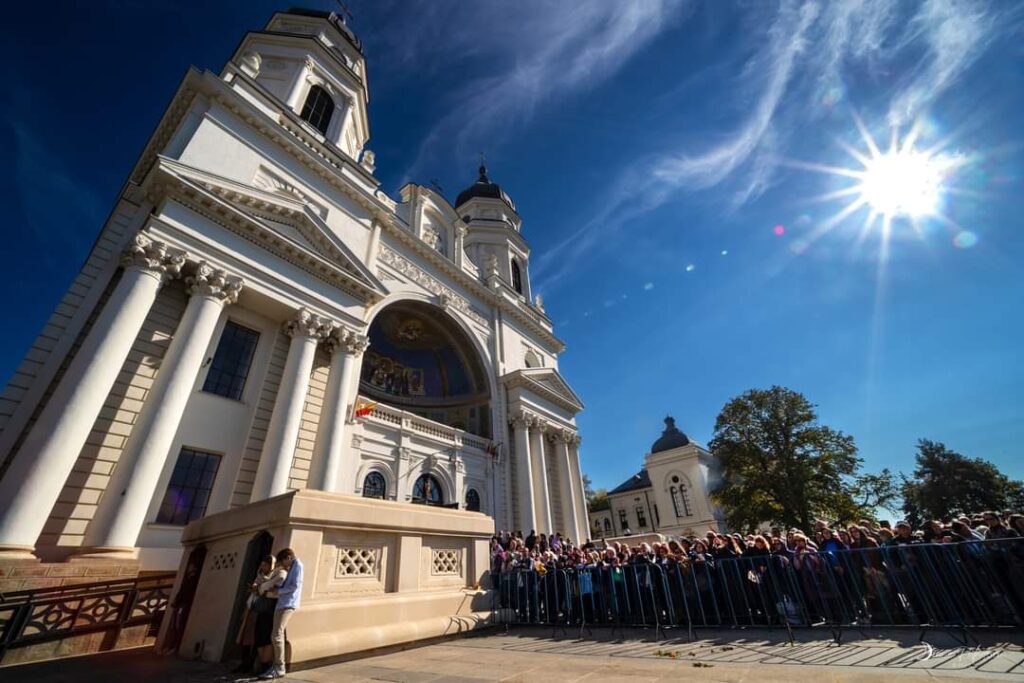
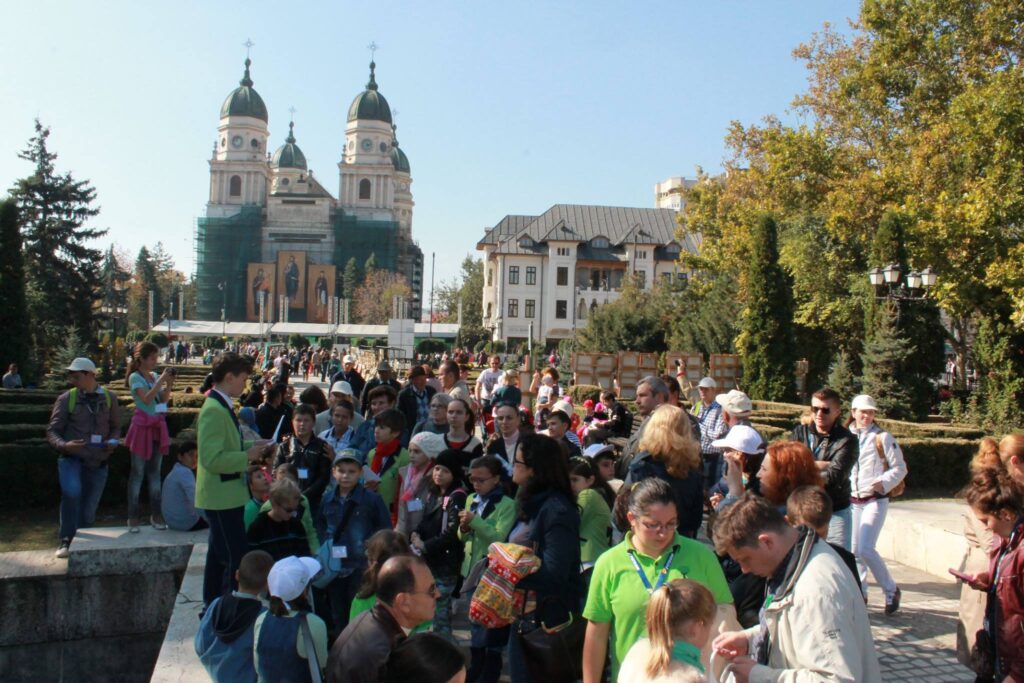
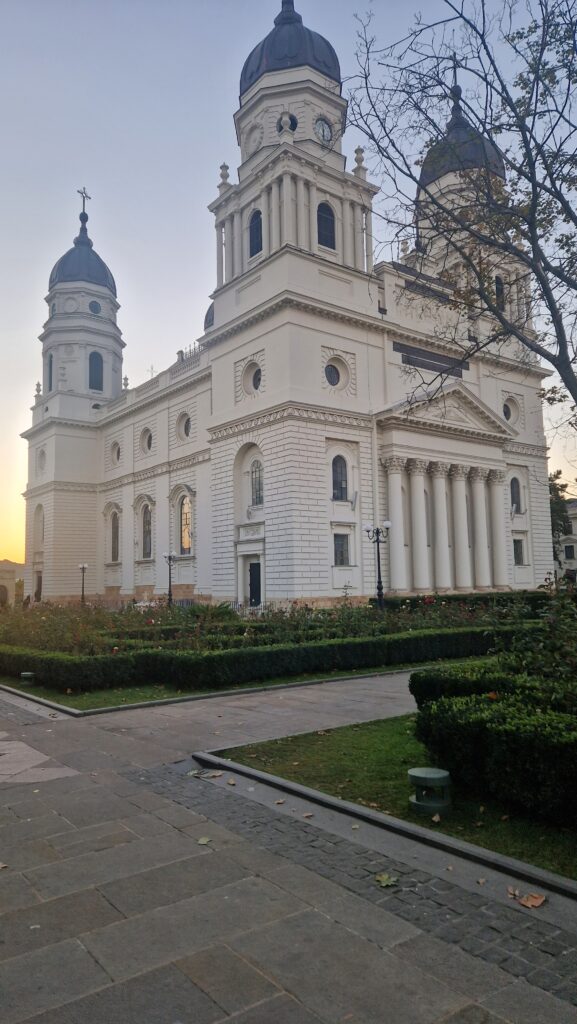
Located on the site of two churches from the 15th and 17th centuries, the Metropolitan Cathedral of Iași was built following prince Sandu Sturza’s decree of 8 August 1826. The cornerstone was laid and the construction occurred during the tenure of Metropolitan Bishop Veniamin Costachi, between 1833 and 1839. The plans were created by architects Freywald and Bucher. Unfortunately, the church remained in ruins until 1880 because the central vault had collapsed. Then, during the tenure of Metropolitan Bishop Josef Naniescu, reconstruction work was completed in 1887, following architect Alexandru Orascu’s plans. Inside the Metropolitan Cathedral, Iași. The Metropolitan Cathedral was consecrated on 23 April 1887, in the presence of King Carol I. Two years later, the shrine containing the relics of Pious Saint Parascheva (Moastele Sfintei Cuvioase Parascheva), the protector of Moldavia, was brought from Trei Ierarhi Church for her celebration, on 14 October, when thousands of pilgrims from our country and abroad come to pay their respects. The cathedral has a rectangular plan, with four turrets at the corners, featuring decorative elements in the Baroque style. The interior paintings were created by Master Gheorghe Tatarescu. Influences of Italian neoclassicism can be seen in the four biblical scenes on the vaults of the central naos, as well as in the faces of the saints. The Metropolitan Church has three dedication days: Sfânta Cuvioasa Parascheva (Pious Saint Parascheva) (14 October), Întâmpinarea Domnului (The Presentation of the Lord) (2 February), and Sfântul Mucenic Gheorghe (Saint Martyr George) (23 April).